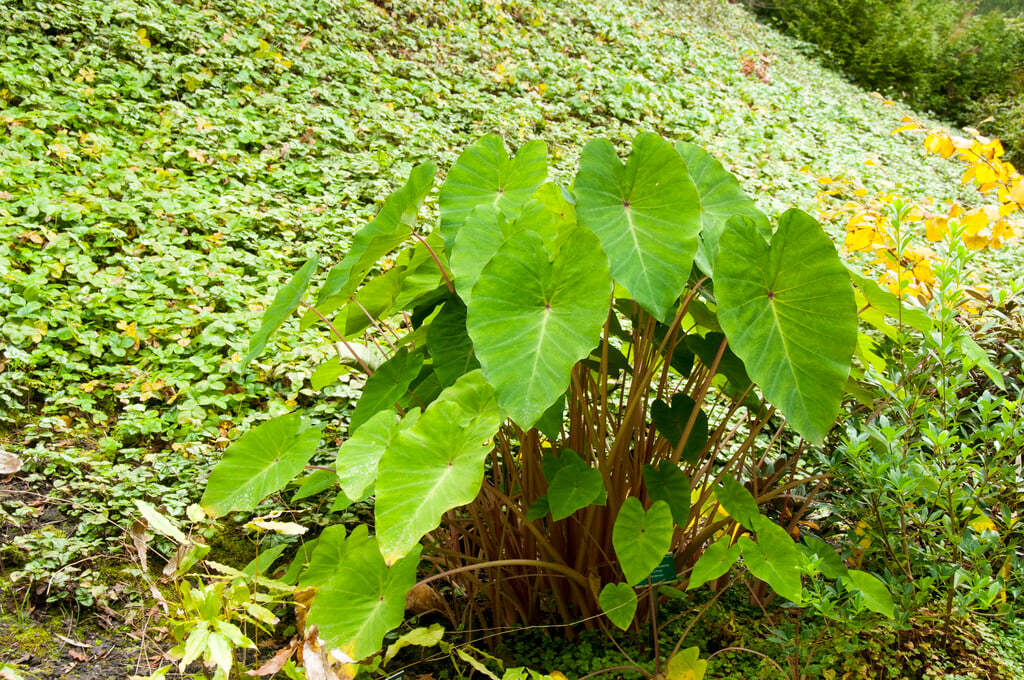Colocasia esculenta 'Pink China'
taro 'Pink China'
A vigorous, tuberous perennial, 1.2m tall, bearing large, heart-shaped leaves to 60cm. The foliage is light green, held on upright, pink-flushed stalks. A striking summer foliage plant and one of the hardiest colocasias; it will die back after the first frosts but should survive the winter given a deep, dry mulch. However, in very cold areas it is better to lift the rhizome in autumn and store it over winter

Buy this plant
Size
Ultimate height
1–1.5 metresTime to ultimate height
2–5 yearsUltimate spread
0.5–1 metresGrowing conditions
Moisture
Moist but well–drainedpH
Acid, Alkaline, NeutralColour & scent
| Stem | Flower | Foliage | Fruit | |
| Spring | Pink | Green | ||
|---|---|---|---|---|
| Summer | Pink | Green | ||
| Autumn | Pink | Green | ||
| Winter |
Position
- Full sun
- Partial shade
Aspect
East–facing or South–facing or West–facing
Exposure
Sheltered Hardiness
H3Botanical details
- Family
- Araceae
- Native to GB / Ireland
- No
- Foliage
- Deciduous
- Habit
- Clump forming, Columnar upright
- Potentially harmful
- Humans/Pets: Harmful if eaten, skin/eye irritant. Wear gloves and other protective equipment when handling For further information and contact numbers regarding pets, see the HTA guide to potentially harmful plants
- Genus
Colocasia can be deciduous or evergreen, tuberous-rooted perennials with arrow-shaped or rounded leaves, often prominently veined; flowers are minute, on a spadix held within a small white spathe, but are seldom produced in cultivation
- Name status
Accepted
How to grow
Cultivation
Plant tubers in humus-rich, moist but well-drained soil spring, choosing a sunny or lightly shaded spot with shelter from strong winds. Water freely when the plant comes into growth and apply a high nitrogen feed weekly. Once the foliage dies back in autumn, either cover the crown with a deep, dry mulch, or lift the tuber and store it dry over winter
Propagation
Propagate by division of rhizomes
Suggested planting locations and garden types
- Patio and container plants
- Sub-tropical
- Bedding
- Conservatory and greenhouse
- Flower borders and beds
Pruning
No pruning required
Pests
May be susceptible to glasshouse red spider mite, aphids and glasshouse whitefly
Diseases
Generally disease-free
Love gardening
Sign up to receive regular gardening tips, inspiration, offers and more
View our Privacy Policy
Get involved
The Royal Horticultural Society is the UK’s leading gardening charity. We aim to enrich everyone’s life through plants, and make the UK a greener and more beautiful place.